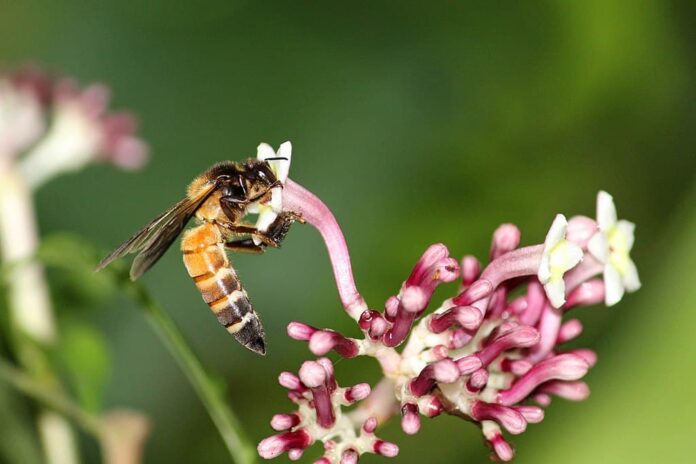With over 16,000 species of bees around the world, many of them share similar sizes. This is why we talk about the largest bees today, the ones with the size that stands out among the others. As useful pollinators, bees play very important roles in nature. There are many things to know and learn about them, but we focus on the size today. You will find 10 largest bees in the list below, and let’s see which one is the most impressive. Each of them is unique in their own way, so take a look.
10Mason Bee
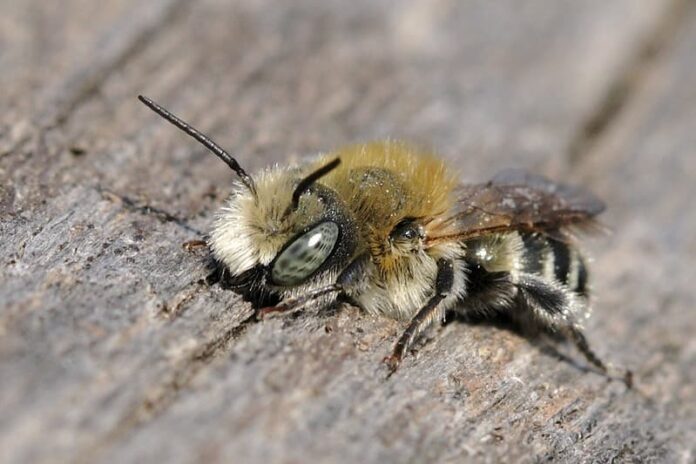
Size: 0.6 – 0.7 centimeter (0.2 – 0.3 inches)
These are the gentle and plump bees that build their nests in the hole and got their name from their habit. Mason bees construct their home by using clay mud to build protective walls. A mason bee builds its home in a range of about 100 meters where they live its solitary life. They like areas with dense flowers so that there is plenty of food for them to feed on. The interesting thing about them is that mason bees are extremely friendly to be around. Kids can stand close to their nest and watch the bees in action with zero worries about getting stung.
Mason bees are one of the excellent pollinators that are responsible for a number of pollination in different parts of the world. Their population spreads from the Americas to Asia and Europe. These bees do not produce honey, but they collect and eat pollen as their daily meal. Probably not too big to be one of the largest bees, but their sizes are quite impressive still. People plant various blooms in their gardens to maintain the number of these bees because they are very helpful. Because their population is in the wild, it is only fair to help them mitigate some challenges that they face.
9Horn-Faced Bee
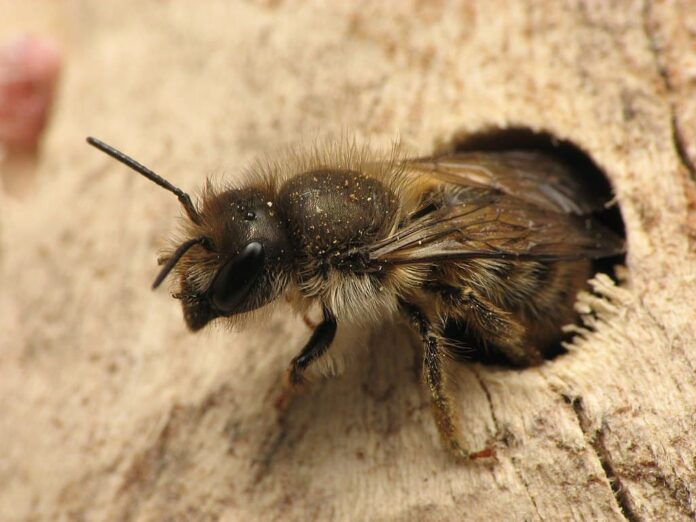
Size: 0.8 – 1.2 centimeters (0.3 – 0.4 inch)
Famous for their horn-like extensions from their lower face, horn-faced bees are one of the largest bees in the world. Probably look aggressive, but these bees are actually very docile and less prone to sting even when aggravated. Horn-faced bees are native to Japan, but they are also found in China, Russia, and some parts of the US. They use bamboo, reeds, and existing holes in trees as their nesting sites. The special thing about horn-faced bees is that they can visit up to 2,500 flowers a day. They are most active between 6AM to 8PM, making them one of the most hardworking and best pollinators. This is also why they are used worldwide as pollinators for commercial crops, especially apple trees.
Metallic green sweat bees range from Canada to Argentina where they nest in the ground or in dense aggregations sometimes. Their habitats are usually close to where there is a supply of nectar and pollen-rich blooms. Not different from some largest bees on the list, this one is also solitary. They dig burrows in the ground to lay eggs, but sometimes the nests are also communal. In the communal burrows, all females share the same entrance but they branch out and create their own tunnels. When they live like this, all females share the main entrance guarding responsibility with each other. The guard bee will protect the entrance by blocking it with her head to keep predators away. Generally, they gather nectar and pollen from many different flowers for themselves and their developing young. Even not at risk, their 2 main threats are habitat loss and pesticide use.
8Mining Bee

Size: 1 – 1.2 centimeters (0.4 – 0.5 inches)
With a furry and stout body, mining bee often appears bigger than they are. This one is actually smaller than a honeybee, and it is often mistaken for bumblebees for the black and yellow coloration. Compared to some of the largest bees on our list, this one is actually very friendly and not aggressive at all. They will not bite or sting, and they live their solitary life without bothering anyone. As a ground-nesting bee, miner bees like to establish their burrowing home in well-drained soils like clay. The females dig a tunnel in the soil using loose earth to construct a chimney-like turret that represents a single nest. Miner bees can nest in the same location for many years or as long as their lifespan.
In their daily life, miner bees visit many wildflowers native to prairies and woodlands in order to collect pollen. Just like most bees, miner bees also feed on nectar and pollen especially the ones from early-blooming plants. Because they are so active, miner bees are potential pollinators of many important crops like asparagus, blackberry, clover, persimmon, etc. Speaking of active, mining bees are only active during the day when it is warm. They spend the night inside their tunnels by themselves. Their mating season is in spring, and the females start to build nests after the males die. Most bees suffer from some threats like most pollinators which are habitat loss and pesticide use.
7Metallic Green Sweat Bee
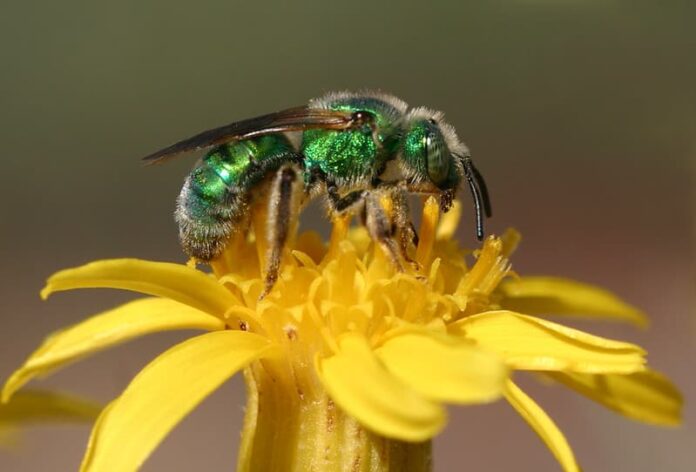
Size: 0.7 – 1.5 centimeters (0.3 – 0.6 inches)
We often imagine black and yellow upon the mention of bees, but this one is different. This is one of the largest bees with a unique metallic green coloration that is very easy to recognize. The color of this species is generally green or blue, especially at the head and thorax. Weirdly enough, sweat bee species are attracted to human sweat from which they use salt for nutrition. That does not mean they will find us and collect sweat, it is just their little fetish. The metallic green sweat bees are non-aggressive, and they feed mainly on nectar and pollen just like regular bees. In fact, this one is an important group of wild pollinators that pollinate a wide range of commercial crops and wildflowers. From apples and legumes to sunflowers and more, these bees pollinate all summer.
6European Wool Carder Bee
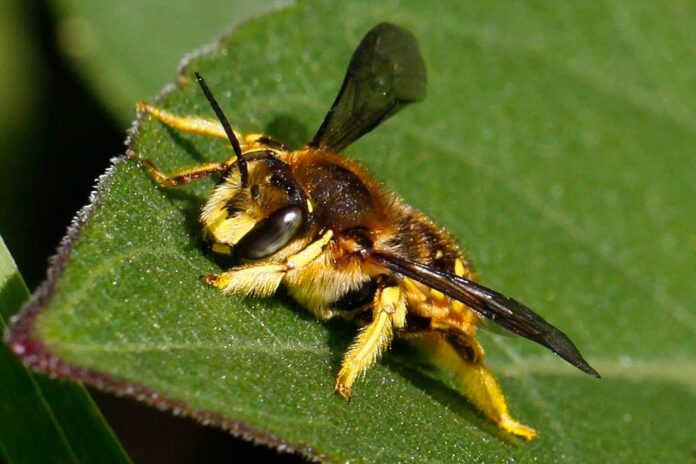
Size: 1 – 1.5 centimeters (0.4 – 0.67 inches)
With a large robust body, the European wool carder bee is one large species in the bee world. This species is solitary, but the males will guard and protect the preferred flowers of the females; with mating purposes in mind. These bees are not only aggressive toward predators but also other bees from the same species. Male European wool carder bees are very territorial, and they will aggressively chase other males and pollinators from their territory. Every day, the males actively patrol and aggressively defend their territories at all costs. Along with that, the bees of this species are fast fliers who are also capable of hovering which is amazing. Although without a stinger, male European wool carder bees do possess spines on the abdomen and sharp mandibles. These are enough to fatally wound other bees by crushing and piercing any bees who enter their boundaries.
The European wool carder bees use lambs’ ears and other hairy-leaved plants to build their nests. They actually got their name “carder” from their behavior of scraping the hair from leaves and forming it into a bundle. The females collect and carry the leaf bundles beneath their bodies back home to use as a nest lining. As builders, the females tend to build their nests at high locations to minimize exposure to parasites and predators. At the same time, this also avoids nest usurpation by other females as well. This species is native to not only Europe but also Asia, North Africa, some regions in South America, and New Zealand. Their favorite places to inhabit are flowerbeds and gardens where they can find food and nest-building resources.
5Cuckoo Bee

Size: 1.6 – 2.2 centimeters (0.6 – 0.8 inch)
Cuckoo bees got their name from having similar brood parasitism like cuckoo birds. Every cuckoo bee species looks different because these cleptoparasites evolved to look like their hosts. These bees lay their egg in another bee’s nest and their early-hatching eggs eat the other bee’s provisions. Sometimes a female cuckoo bee kills the other bee’s eggs or leaves them for her larvae to eat. Because of their large mandibles, they are able to chomp and kill other larvae without a problem. This also means cuckoo bees don’t collect nectar or pollen to feed their young as well; hence no collecting hairs. However, they do drink nectar from flowers and eat pollen to develop ovaries and get more energy. Their common habitats are forests, heaths, urban areas, and woodlands where they can find food and other bees’ nests.
4Leafcutting Bee
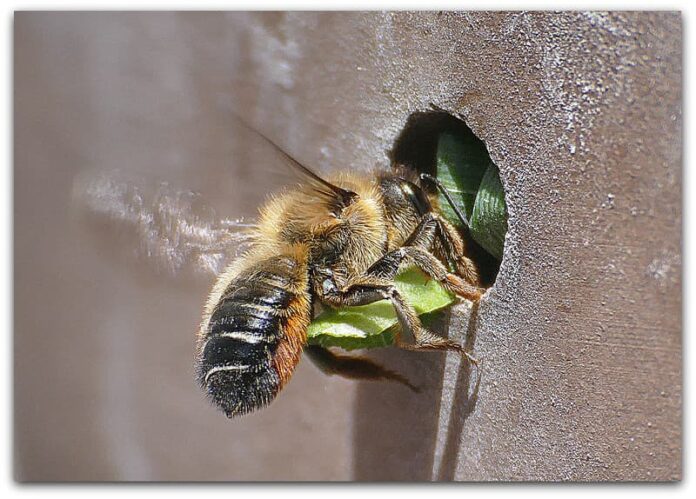
Size: 0.5 – 2.4 centimeters (0.19 – 0.86 inch)
The name says it all, these bees cut leaves to build a nursery for their larvae. A female leafcutting bee finds a suitable space in pre-existing tubular cavities like empty tunnels, hollow stems, or rotting wood. Once she found a cavity that is long and wide enough, she begins to line the hole with leaves and petals. This is to create a comfortable and nice brood chamber before laying her eggs inside. Each chamber is home to one egg, so the female leafcutting bee is constantly adding chambers until she fills the hole. The bees then provide pollen for the larvae to eat until they mature and leave the chambers in winter.
Being one of the largest bees, leafcutting bees have larger heads than most bees due to extra muscles. The females of this species even have teeth to chew through leaves so that they can construct a proper home. Each cut is a neat crescent or almost circular shape in the leaf without causing harm to the plants at all. They also carry pollens on the side of their abdomens which means they fall off easily, making them one of the best pollinators. At the same time, they are also useful to gardens as well since they also help to pollinate different plants. These bees are so good that commercial agriculture in the United States uses them to help pollinate their crops.
3Carpenter Bee

Size: 1.2 – 2.5 centimeters (0.5 – 1 inch)
Received their name from their nesting behavior, almost all carpenter bee species burrow into hard plant materials like bamboo or dead wood. Carpenter bees make nests using wood, but they don’t eat wood. An interesting thing about them is that most species of these bees are all black or primarily black with some yellow or white pubescence. On top of that, carpenter bees have short mouthparts so they feed on open-faced or shallow flowers. Even so, they are amazing pollinators because some flowers that they feed on are not pollinated by other insects. Traditionally, carpenter bees are solitary but some species also form a family of their own as well.
In several species, the females live alongside their own daughters or sisters in a small social group. When living in a family like this, they use wood bits to form partitions between the cells in the nest. Apart from being important pollinators, carpenter bees are a nuisance by causing damages. The females excavate new tunnels in the wood of buildings or homes for egg laying. Even if they don’t sting, their presence can be daunting during mating season and nest construction. Although they are one of the largest bees, this species is still a small creature. Their natural predators are birds like bee-eaters, shrikes, and woodpeckers as well as other animals like honey badgers and mantises.
2Giant Honeybee
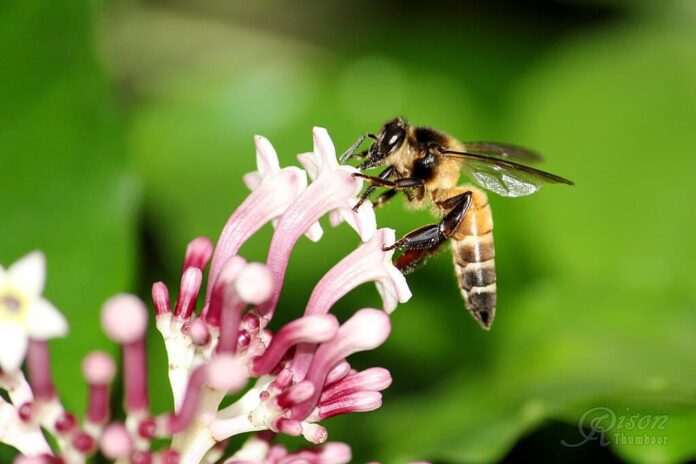
Size: 3 centimeters (1.2 inches)
Large bees are already terrifying, let alone the ones with bad tempers and aggressive defense strategies like the giant honeybees. This is the second largest bees and the largest honeybee species in the world. With large stingers, a jab from giant honeybee adult workers can be extremely painful. Even worse, people with allergic reactions to their sting may face fatal conditions such as bowel gangrene, fatal anaphylaxis, or myocardial infarction. Although it means suicide to sting, giant honeybees are not afraid to attack when there are intruders. Their colorations are quite similar to the European honeybee with black, golden, and pale bands on the abdomen. The queen is darker than the workers, and she has a larger abdomen. As the sole reproductive female in the colony, the queen lays all the eggs for the colony.
Giant honeybees inhabit forested areas in South and Southeast Asia where they build nests far off the ground. You may come across their nests that can reach up to 1 meter on buildings, tree limbs, or under cliff overhangs. Living in colonies, each nest consists of a vertical comb made of workers’ wax suspended from above. Typically, the comb is covered by a dense mass of bees in several layers just like most busy bees’ homes. There are up to 100,000 bees or more in each colony, and they are most active in the dry season. One colony can split into 2 colonies once the colony becomes large in size and there are abundant food resources. Most members are workers, and they perform all tasks such as foraging for food, producing honey, protecting the nest, and tending the brood.
1Wallace’s Giant Bee
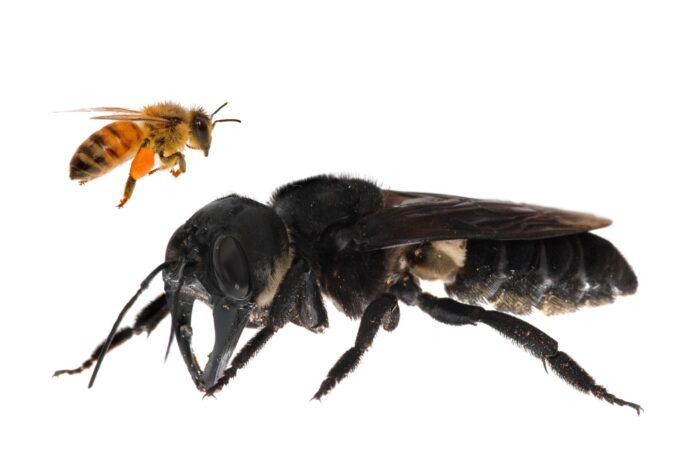
Size: 4 centimeters (1.5 inches)
This is the world’s largest bees who made headlines for the past few years after they were rediscovered in 1981. “World’s Biggest Bees Found Alive” was the most common headline after they were believed to be extinct a century ago. A team of researchers rediscovered Wallace’s giant bees after carefully following a 19th-century naturalist’s journal to a tiny Indonesian island. People there called them Raja Ofu, the King of Bees, but the men who found them called these bees flying bulldogs. A king of bee is about the size of an adult thumb, with a wingspan of around 6 centimeters. You know what they say about big bees, they also have big stingers as well. However, there are no records of the pain level from the sting of the giant bees yet.
The bizarre part is that these giant bees have a giant pair of pincers growing out of its head. They use these pincers to scrap up sap from trees to termite-proof their nests. Speaking of nests, Wallace’s giant bees are solitary and they live in holes they dig in termite nests. This species depends on primary lowland forests where they can find resin and termite mounds. It is probably for the best to live alone, seeing a swarm of these will be a long-lasting nightmare. Just like regular bees, flying bulldogs also feed on nectar and pollen but they don’t produce honey. The bee’s habitat in Indonesia is under threat due to the growing palm oil plantation at the moment. This species is Vulnerable, and there is no legal protection to keep them from becoming extinct at the moment.
Related Post: Biggest Beetles In The World

